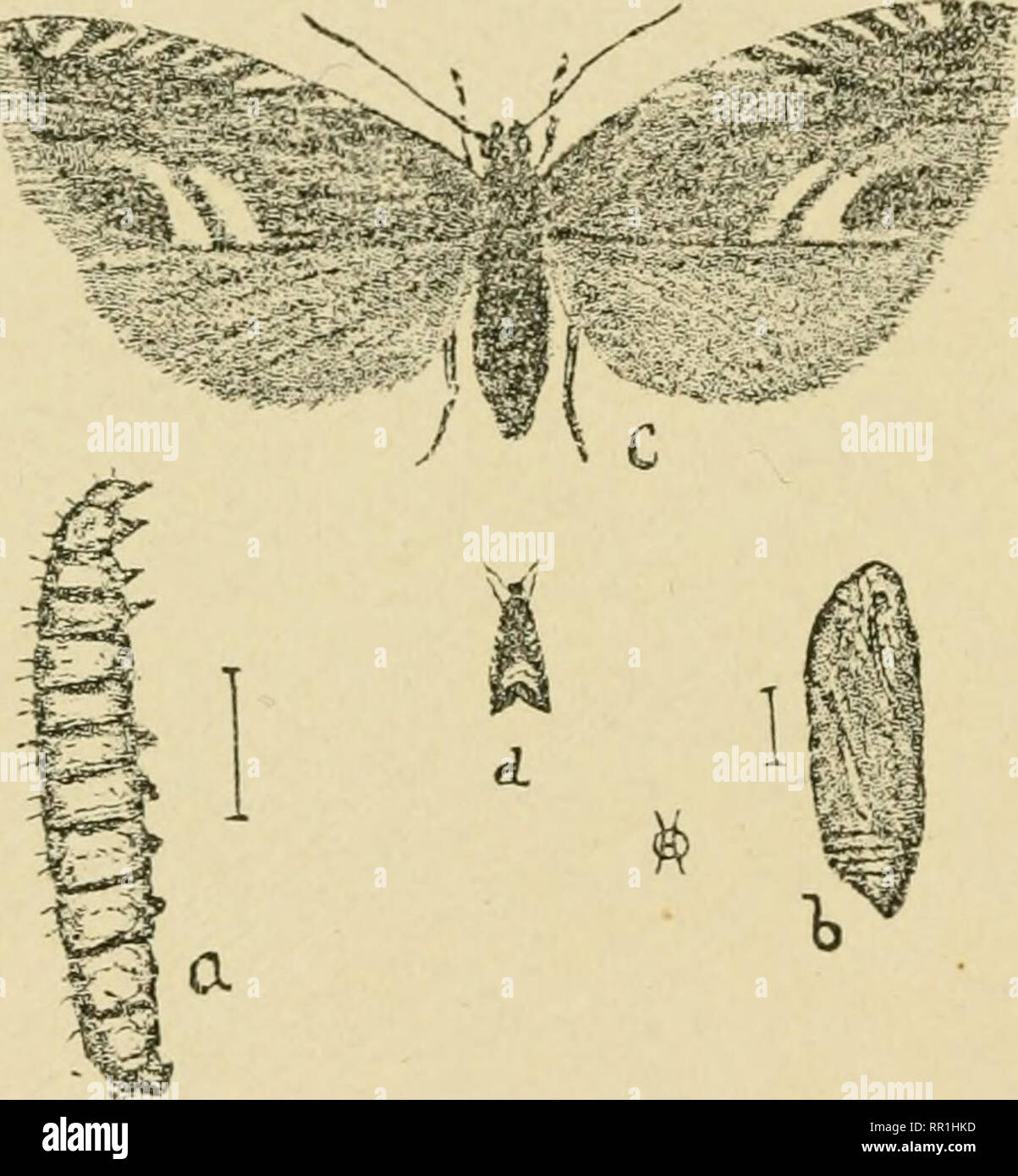. Agricultural entomology for students, farmers, fruit-growers and gardeners. Insects; Insects, Injurious and beneficial. 220 LEPIDOPTERA The larva (Fi**-. 17(),(^/) is a small greenish-white caterpillar with a (lark brown head, and is al)()ut ().2r) to 0..'^ of an inch long when full grown. Many of them become tinged with red toward the hinder extremity as they approach the time of pupating. The delicate white silken cocoons are spun in the liead among tlie dried florets, grass, and bits of eroded but im- devoured flowers, so covering them with brown as to make them difficult of detection. Th

Image details
Contributor:
Library Book Collection / Alamy Stock PhotoImage ID:
RR1HKDFile size:
7.1 MB (280.4 KB Compressed download)Releases:
Model - no | Property - noDo I need a release?Dimensions:
1521 x 1643 px | 25.8 x 27.8 cm | 10.1 x 11 inches | 150dpiMore information:
This image is a public domain image, which means either that copyright has expired in the image or the copyright holder has waived their copyright. Alamy charges you a fee for access to the high resolution copy of the image.
This image could have imperfections as it’s either historical or reportage.
. Agricultural entomology for students, farmers, fruit-growers and gardeners. Insects; Insects, Injurious and beneficial. 220 LEPIDOPTERA The larva (Fi**-. 17(), (^/) is a small greenish-white caterpillar with a (lark brown head, and is al)()ut ().2r) to 0..'^ of an inch long when full grown. Many of them become tinged with red toward the hinder extremity as they approach the time of pupating. The delicate white silken cocoons are spun in the liead among tlie dried florets, grass, and bits of eroded but im- devoured flowers, so covering them with brown as to make them difficult of detection. The pupae work their way entirely out of their cocoons and drop to the ground before bursting their pupal cases, which may be found in abundance on the ground from which a brood has just issued.. Fig. 170.—Grapholitha interstinctana: a, larva; h, pupa; c, adult; all enlarged; d, adult—natural size. (After Osborn.) The remedies for the species are summed up as follows: 1. Rotation of crops, not keeping clover on the same ground over three years, and only two if the field becomes badly infested. 2. That the seed for a new crop be planted on land as remote as possible from old clover fields. 3. That infested fields from which seed is desired the following year be pastured in the fall to take up all late growths and leave the field free from vegetation, and that. Please note that these images are extracted from scanned page images that may have been digitally enhanced for readability - coloration and appearance of these illustrations may not perfectly resemble the original work.. Osborn, Herbert, 1856-1954. Philadelphia, New York, Lea & Febiger